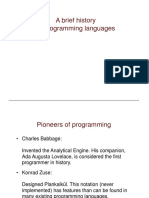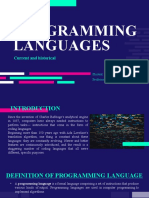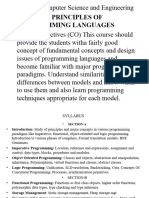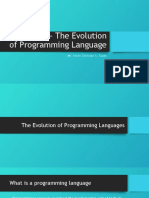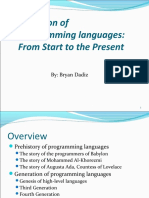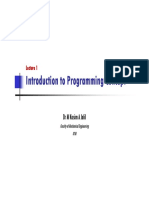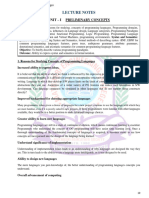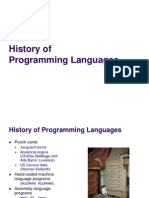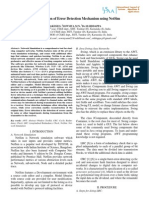0% found this document useful (0 votes)
32 views27 pages1.1 History of Programming Languages
The document outlines the syllabus for a course on the Principles of Programming Languages, covering the importance of programming languages, their history, and various programming paradigms such as procedural, object-oriented, functional, and logic-based. It also discusses notable programming languages from history, their features, and their impact on contemporary programming. The text is authored by Prof. S.N. Shelke and is intended for students in the Department of Computer Engineering at Sinhgad Academy of Engineering.
Uploaded by
hetavimodi2005Copyright
© © All Rights Reserved
We take content rights seriously. If you suspect this is your content, claim it here.
Available Formats
Download as PDF, TXT or read online on Scribd
0% found this document useful (0 votes)
32 views27 pages1.1 History of Programming Languages
The document outlines the syllabus for a course on the Principles of Programming Languages, covering the importance of programming languages, their history, and various programming paradigms such as procedural, object-oriented, functional, and logic-based. It also discusses notable programming languages from history, their features, and their impact on contemporary programming. The text is authored by Prof. S.N. Shelke and is intended for students in the Department of Computer Engineering at Sinhgad Academy of Engineering.
Uploaded by
hetavimodi2005Copyright
© © All Rights Reserved
We take content rights seriously. If you suspect this is your content, claim it here.
Available Formats
Download as PDF, TXT or read online on Scribd
/ 27
